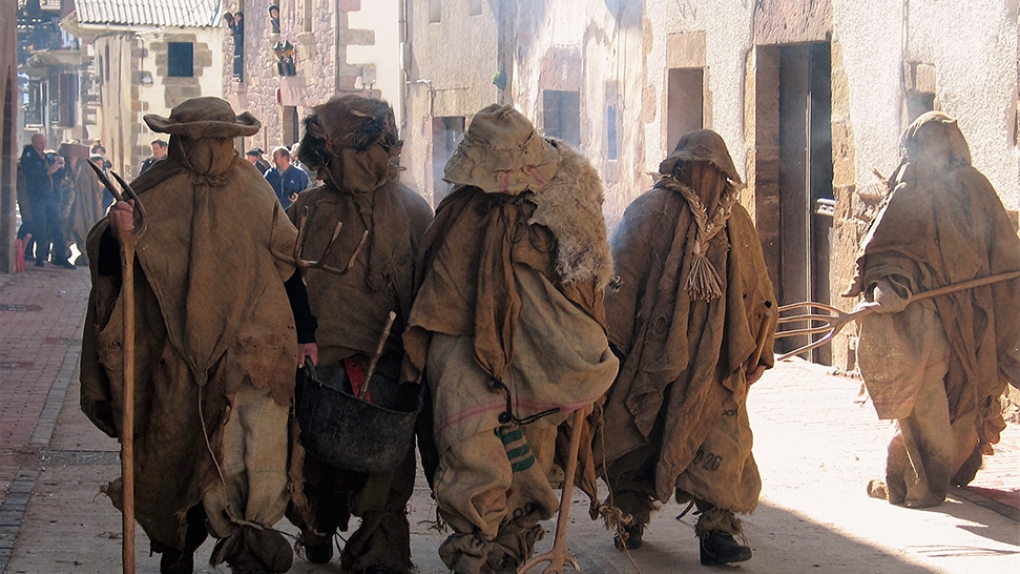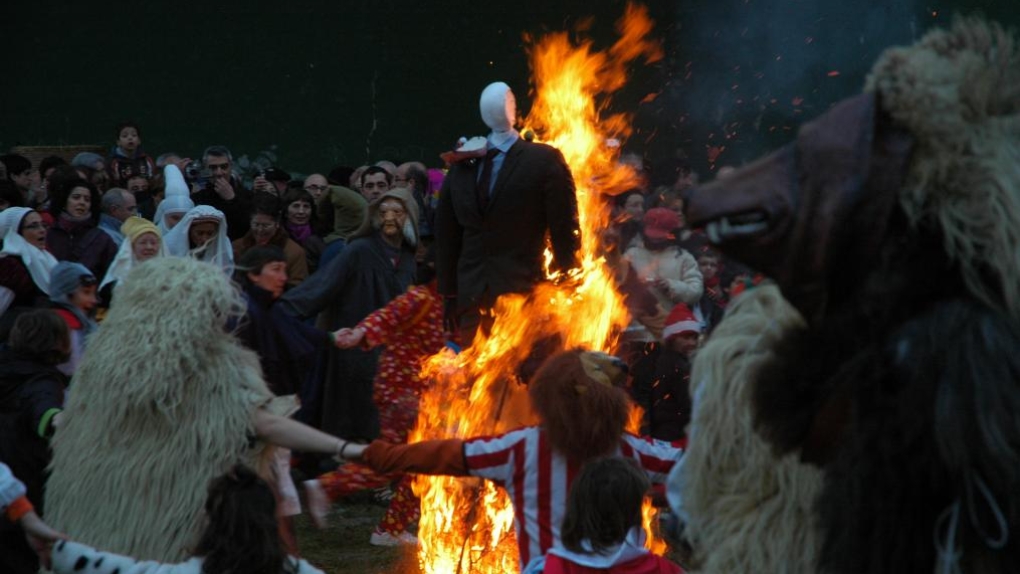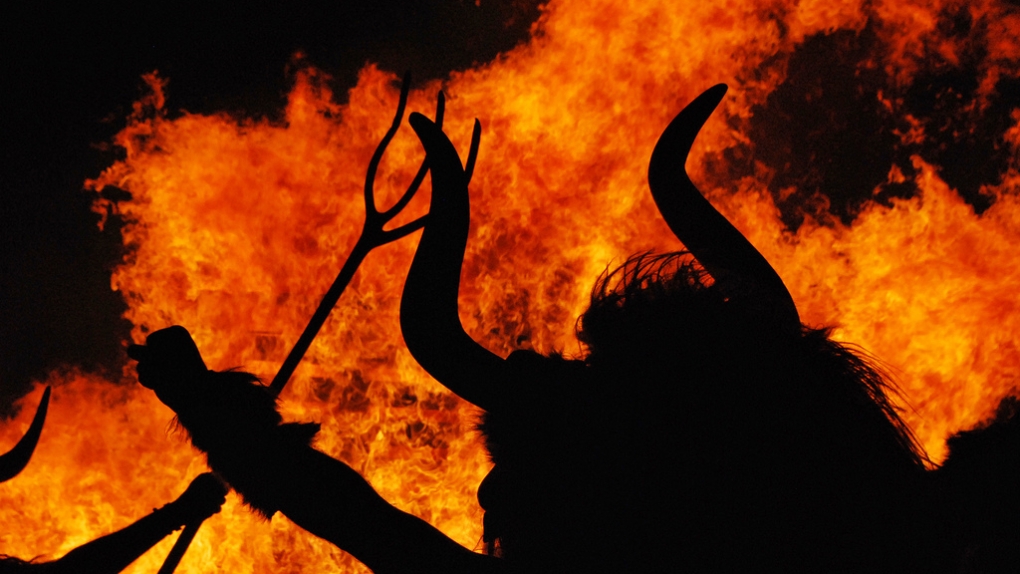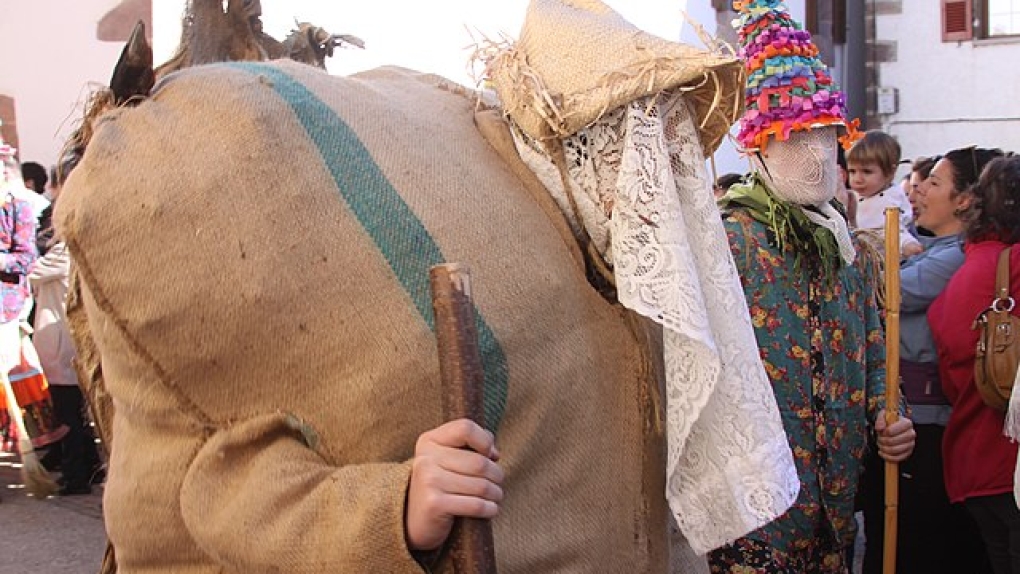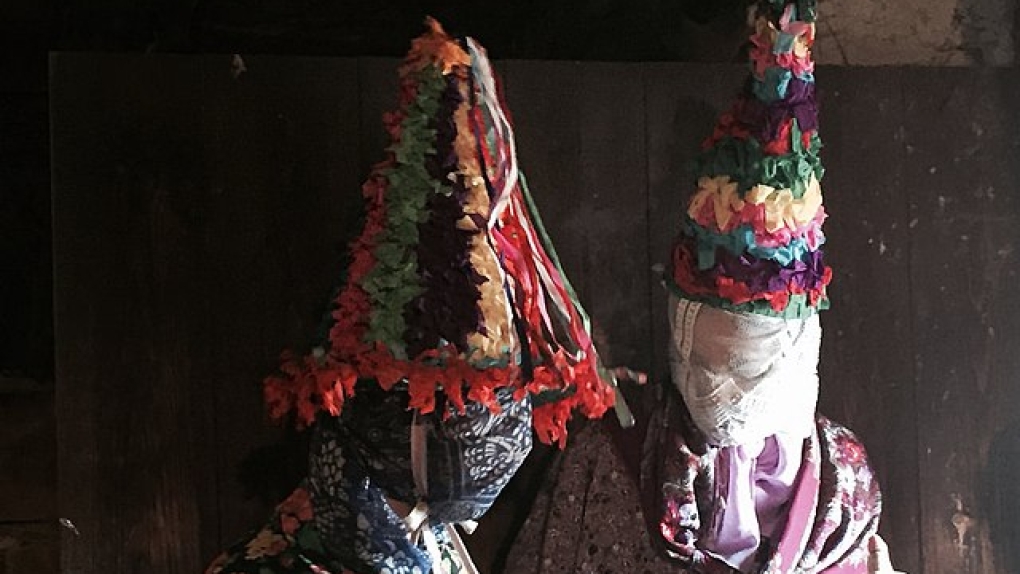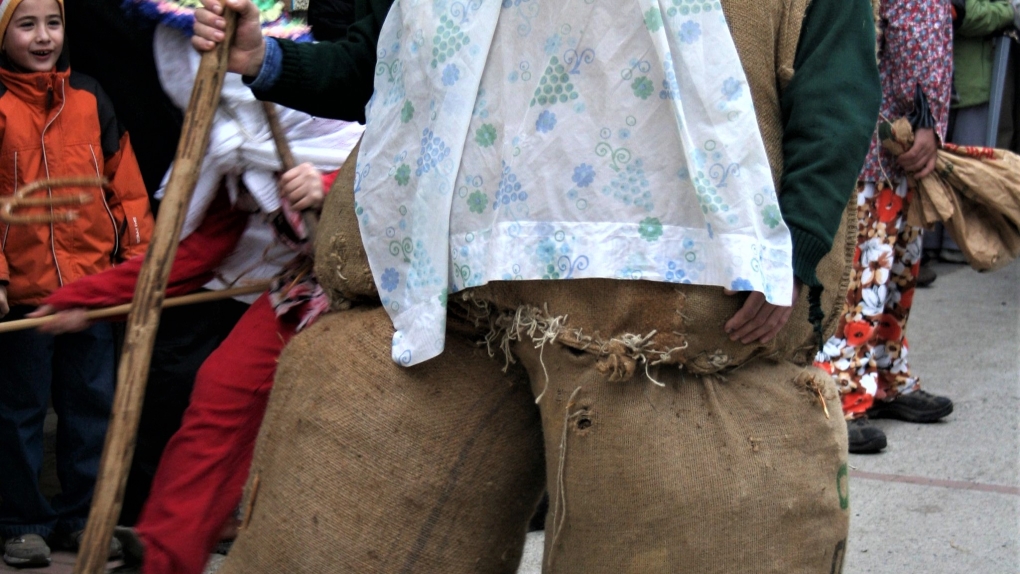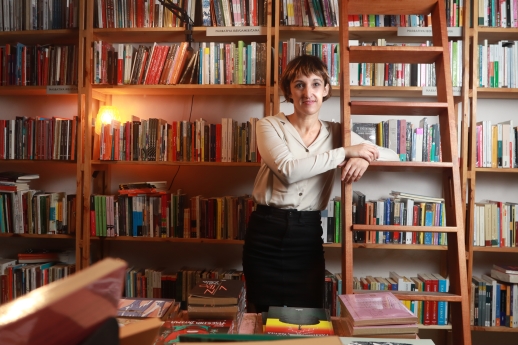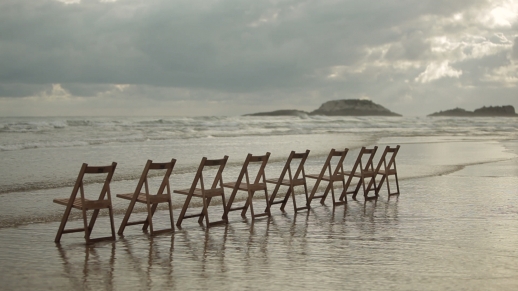The revival of rural carnival celebrations in the Basque Country allows for the enjoyment of increasingly popular ancient winter rituals connected to nature.
The other Basque carnival: bears, bonfires and bells
09 Feb 2024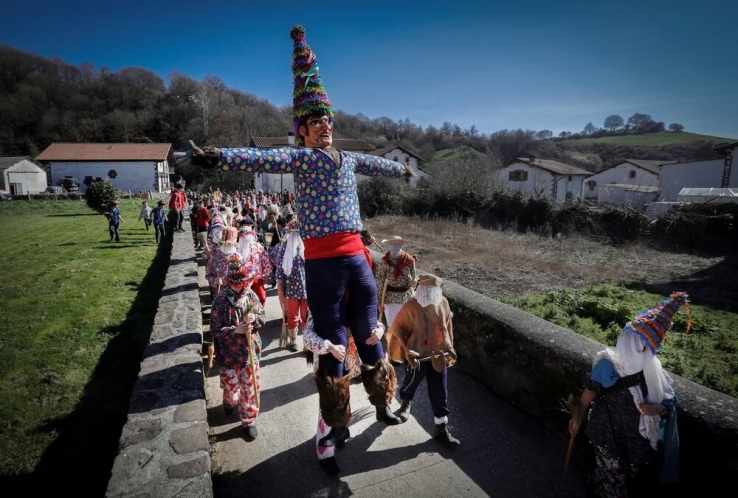
When anthropologist and historian Julio Caro Baroja visited the Lanz carnivals in February 1964, accompanied by his brother Pío and a cameraman for No-Do (a series of propaganda newsreels from the Franco regime shown in Spanish cinemas), this celebration was already a thing of the past. It was discontinued after the Spanish Civil War (1936-1939) and, with prior authorisation, was revived expressly for the purpose of filming. The elders believed that the youngsters would be incapable of carrying out the entire carnival ritual, and the only man who knew how to play the traditional tunes on the txistu fipple flute was in mourning. Nearly six decades later, the main threat to this renowned rural carnival is being overwhelmed by its own success.
A similar phenomenon has happened with the carnivals of Ituren and Zubieta, now crowded with visitors, with the arrival of the wild momotxorros of Alsasua and, to a lesser extent, with the burning of Marquitos in Zalduondo. These winter rituals and masquerades, with counterparts found in various parts of Europe, have experienced a significant revival in the Basque cultural context in recent decades. Despite the risks, this dynamic has helped popularise festivities with significant cultural value, some of which are exceptionally vibrant and colourful.
Characters like Miel Otxin and Ziripot from the Lanz carnival, the joaldunak of Ituren and Zubieta, the zamaltzain of Zuberoa or the hartza (bear) that animates the festivities in Arizkun and Markina-Xemein have become beloved iconic figures in the Basque popular culture. It is small miracle, considering that many of these celebrations disappeared during the Franco regime.
These are rituals of transition that symbolise the awakening of nature.
"Perhaps the most remarkable aspect of these winter masquerades, celebrated throughout Europe, is that in the Basque Country, revitalisation began earlier and the traditions have come back with greater determination than in other areas. The effort being made in various regions today actually began in the 1970s. This has facilitated the faithful recovery of rural carnivals that had been lost," says Aitor Ventureira, a writer and researcher in the field of ethnography.

An ancient time line
As a starting point when discussing these rural winter masquerades, it is important to set them apart from the urban carnivals celebrated worldwide. While they share distant origins, urban carnivals are much more intertwined with religion, such as the Roman Saturnalia and pre-Lenten festivities.
Ventureira, like other experts, traces the time line of these rural carnivals held throughout Europe back to the Neolithic period, when life was more deeply intertwined with nature. The purpose of the carnival, in fact, has to do with this connection to the natural environment.
“We are talking about communities that are closely tied to nature, where moments of change were ritualised. Winter was a dark time, a time when nature is asleep. But at this time of the year, the sun begins to gain ground. These are rituals of transition that symbolise the awakening of nature," explains Ventureira.
Other experts, such as the respected anthropologist José Antonio Urbeltz, concur in their research, emphasising the Neolithic origin and intimate connection between these rituals and nature. However, they associate them with the fear of insects and infestations that would destroy the crops, a matter of life or death for the peasants. Urbeltz believes that this fear and incantations to ward off pests are of ancient origin and would have been common to the whole of Europe.
From Portugal to the Balkans
The broad European context of these winter masquerades is less open to discussion, as the traces are still evident. "The hartza, or bear character, that we see in Markina, Arizkun, Alsasua and Ituren can be found in celebrations all over Europe. Our carnivals share many aspects with carnivals celebrated from Portugal to the Balkans. Here´s another example: the joaldunak of Ituren and Zubieta, which have become very popular in Basque culture, are very much like the zamarracos in Cantabria and other bell-bearers in Bulgaria," says Aitor Ventureira.
As he sees it, the reason is very simple: "Europe has been interconnected since Neolithic times." The key is the ´awakening the earth´ that most researchers attribute to these winter rituals. "The motivation to awaken the earth and drive away evil spirits was the same in southern Portugal as it was in the Balkans. The elements used for the rituals were also similar: animals, plants, bells...," he adds.

At risk of becoming diluted
The revitalisation of carnivals linked to Basque culture has enabled something remarkable: this thread, whose origins are lost in time, has managed to endure to the present day. But there is a risk of distortion. Hundreds of mobile phones jockey for space to immortalise the joaldunak of Ituren and Zubieta, where guided tours are already arriving. At the same time, the incorporation of carnival-related characters into Basque dances and performances unrelated to these winter festivities has become the norm. Even the costume of Miel Otxin, a symbol of ´vice and evil´ in Caro Baroja´s view, has become a popular choice among schoolchildren.
"I´ve seen images of the Ituren carnival celebrated by six people, and yet today, there is hardly any room for the joaldunak. There´s a risk that some of these festivities will be watered down and become mass events. At the same time, there´s a risk of losing their essence. It´s fine for characters associated with these masquerades to appear in other festivities through dance groups, as long as their origin is clearly explained. The same goes for passing the stories on to children. It´s important to teach them about these traditions, but without distorting what they really are," adds Ventureira.

The essentially positive part of this revitalisation is the possibility of enjoying genuine, popular and, in some cases, spectacular festivities. "From an anthropological perspective, the masquerades of Zuberoa and carnivals of Alsasua and Ituren are fascinating. So are the paloteados stick dances of Abaltzisketa, or the carnival of Zalduondo and Lanz, all of which have attracted anthropologists from around the world. As for stunning visuals, I´d choose the Alsasua carnival. It’s amazing," he adds.
Nearly six decades have elapsed since Julio Caro Baroja visited Lanz to initially, in an ad hoc manner, document its rural carnival. Today, however, none of the apathy towards this festivity detected by the eminent anthropologist among the youth remains.
For three days, from 10 to 13 February, the locals go all out. Their carnival is now declared an Asset of Cultural Interest, and the town fills with visitors. As in the past, the jolly Zaldiko pushes and shoves poor chubby Ziripot and the bandit Miel Otxin burns at the stake. Now, however, it all happens amid videos and selfies.

